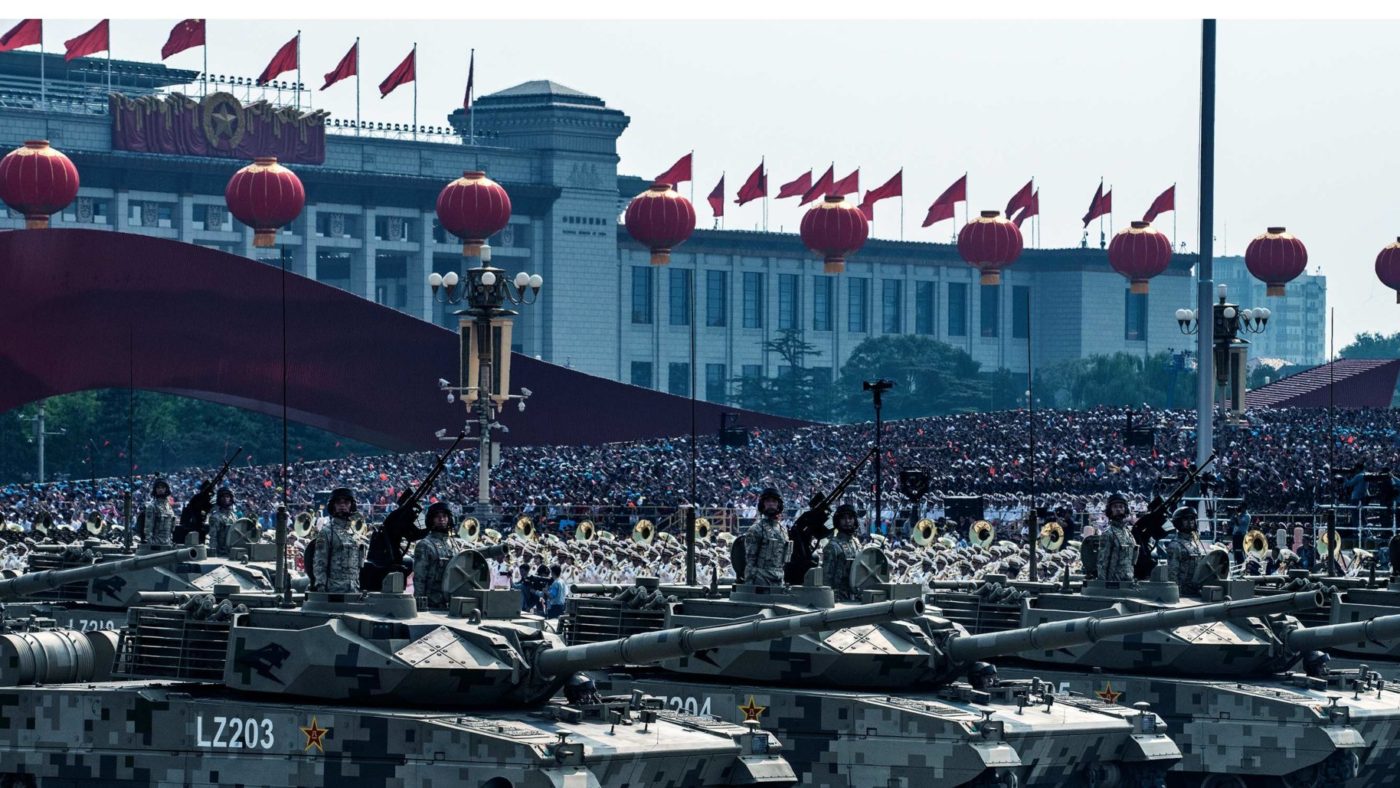China’s rise as a global power is reflected, first and foremost in its expanding economic prowess and aspirations to take a leading position in next generation technology. Nowhere is this clearer than in the advances it has made over the last decades in developing a globally competitive defence industry.
The origins of China’s defence industry
China’s defence industry has broadly evolved in four stages since the founding of the People’s Republic of China (PRC) in 1949. During the Cold War, defence development was modelled closely on the USSR and transfers of technology and weapons systems ensued between the two sides. Domestic instability during the Great Leap Forward (1958-62) and the Cultural Revolution (1966-72), paired with the Sino-Soviet Split, which halted cooperation from the mid-1960s onwards, stalled modernisation in the industry. Although part of Deng Xiaoping’s Four Modernisations from the late 1970s onwards, defence science and technology were not a key priority. The emphasis during this second period was consequently put on dual-use technology, “civil-military integration”, serving both military and civilian ends.
Shock of the new – the Iraq War and modernisation
Domestic and international factors led to a third reform stage. By the late 1990s, Chinese systems were reportedly a generation or two behind comparable Western or Russian technologies, with serious reliability concerns. US joint command capabilities during the 1st Gulf War and the Iraq War stunned People’s Liberation Army (PLA) strategists and military strategy evolved accordingly. In 2004 “local wars under informationised conditions” were seen as the future of conflict in the 21st century, which is articulated in the 2015 military strategy the 2019 Defence White Paper. Informationisation reflects the centrality of information collection and processing in modern military operations and is key to enable efficient operations across the military commands, the army, navy, and airforce.
Beyond the Golden Rice Bowl – transformation into a global competitor
Spurred on by these perceived deficiencies compared to the US, China’s defence sector and technologies were developed into a globally competitive industry. Reforms begun in 1997 by General Secretary Jiang Zemin and continued under his successor Hu Jintao initiated the third reform phase, increasing R&D spending and introducing market mechanisms to foster competition. The 15th National Congress in 1997, the highest gathering of the Communist Party held every five years, initiated the restructuring of the defence sector, which formed ten state-owned enterprises (SOEs) that continue to dominate China’s defence industry today. Measured by arms sales in USD, eight of China’s defence SOEs are among the 25 largest defence companies globally and three are among the top ten. A conservative estimate of sales for four SOEs – AVIC, CETC, NORINCO and CSCG – was $54.1 billion in 2017 alone.
These developments should be seen in the context of China’s growing presence on the world stage. The ‘Going Out’ policy in the late 1990s and WTO membership in 2001 accelerated China’s integration into the global economy. As Chinese products moved up the value chain, so did defence technologies and demand for Chinese systems grew. The Stockholm International Peace Research Institute estimates that, comparing the periods 1999-2003 and 2014-18, China’s imports of major arms decreased by 50%, while exports increased by 208%, reflecting the PRC’s current status as the fifth largest exporter of major conventional weapons globally.
With greater economic clout came greater political ambitions under Xi Jinping. China has the second largest defence budget after the US, estimated at $228 billion in 2017; significantly more than the $151 billion that was officially announced. Indeed, a strong military equipped with indigenous technologies is a key part of Xi’s endeavour to restore China’s status as a leading great power in Asia. Xi’s fourth reform stage consequently aims to foster emerging technologies and innovation to achieve autarky vis-à-vis foreign suppliers. Accordingly, the 13th Five Year Plan for National Defence Science and Technology Industry Development (2016-20) aims to improve civil-military integration and increase arms exports.
The international implications of these developments are gradually becoming evident. As the authors noted in a recent report, the proliferation of Unmanned Aerial Combat Vehicles (UCAVs) along the Belt and Road Initiative, Xi’s flagship foreign policy initiative, captures most of the aforementioned elements.
Part of larger package deals, UCAVs reflect the modernisation of China’s defence-industrial base in the context of China’s increasingly outward-facing defence industry and Beijing’s willingness to foster strategic partnerships with recipient countries. Their dual-use technology – UAVs and UCAVs – fits well with the aspirations and opportunities posed by markets in transition. Countries including the important US trading partners Saudi Arabia and Egypt have acquired Chinese UCAVs, which are more readily available and up to 75% cheaper than the competition.
This compliments a larger picture in which the provision of high-tech military equipment factors into the growing US-China rivalry: Jordan, the United Arab Emirates and Iraq have turned to China to purchase UCAVs after Washington, bound by the Missile Technology Control Regime, had denied the provision of these systems. Washington’s military pre-eminence is waning after decades of expensive counter-terrorism operations depleted resources instead of funding innovation in strategic areas of future geopolitical competition. The coming next decades in the US-China relationship will be pivotal in this regard.
Click here to subscribe to our daily briefing – the best pieces from CapX and across the web.
CapX depends on the generosity of its readers. If you value what we do, please consider making a donation.


